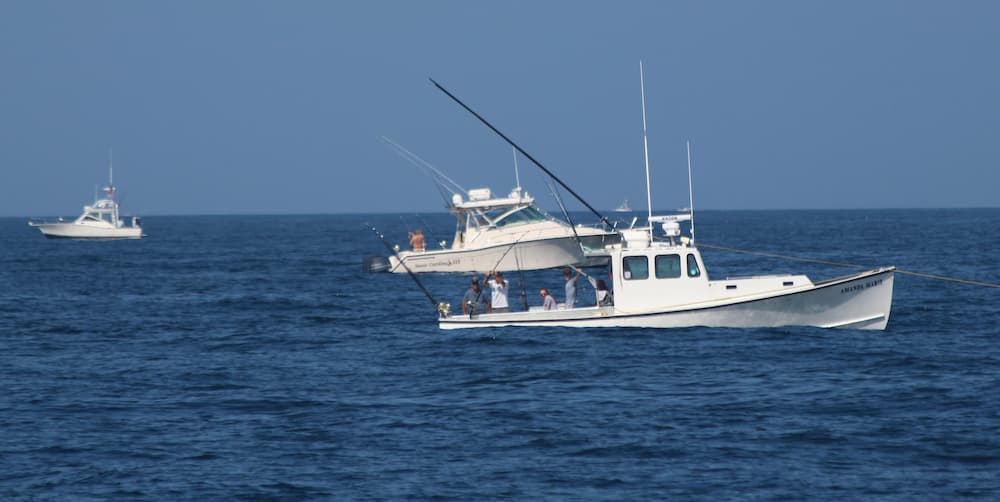
Boaters use the sanctuary as a marine highway to move north and south along the coast, to fish the waters, to view the whales and other wildlife, or to just enjoy being out on the water. Use NOAA Nautical electronic chart for Massachusetts Bay, US4MA13M or NOAA paper chart 13267.
Sanctuary waters can range from flat calm to dangerously rough, and changes can happen quickly. Before venturing out to Stellwagen Bank, check forecasts for weather and sea conditions.
Make sure your vessel is in good condition, you have proper safety equipment and personal flotation devices for all on board, and you have left a float plan on shore in case of emergency. The U.S. Coast Guard Auxiliary offers virtual and free in-person vessel safety checks. Boat access ramps around Massachusetts Bay can allow direct trips to the sanctuary, but keep in mind your boat’s size, speed, the distance to travel, and weather forecasts.
Use boat pumpout facilities before and after departure to keep human wastes from fouling the whales’ home, and make a special effort to keep all trash on board for disposal in shoreside waste containers.
Debris like plastic bags, ropes, and pieces of fishing line present ingestion and entanglement threats to wildlife. Learn more about this issue at NOAA’s Marine Debris website.
When boating in the sanctuary, you may encounter whales and other wildlife. To keep you and the animals safe, review the simple safe boating tips in the See A Spout boater education website developed by NOAA Fisheries, Whale and Dolphin Conservation, and the sanctuary. NOAA Fisheries offers guidance on watching whales and other wildlife in New England waters. Learn more about responsible wildlife viewing and take the pledge for wildlife.